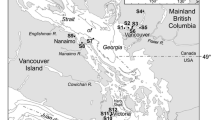Abstract
The status of the contamination of Dutch marine harbor sediments was reevaluated after a period in which emissions from point sources had been greatly reduced. Data on sediment chemistry from 1999 and 2000 were assessed against screening levels (SLs) selected from available sediment quality guidelines and representing a low probability of adverse biological effects. This yielded a ranking of the environmental hazard of 22 contaminants.
Most of the sediments were silty material; every year 15 to 25 million m3 of such material is dredged from Dutch harbors. Some 34% of the volume exceeded one or more SLs. The contaminants of concern were tributyltin (TBT), mineral oil (petroleum hydrocarbons), polychlorinated biphenyls (PCBs), and mercury. The PCB and mercury contamination is the legacy of historic inputs; the TBT and mineral oil contamination is related to present-day shipping activity. Concentrations of trace metals, rare earth elements, organochlorine pesticides, and polycyclic aromatic hydrocarbons (PAHs) were low and apparently of minor environmental concern. It is concluded that the risk assessment would be improved by laboratory testing of adverse biological effects.
Similar content being viewed by others
Author information
Authors and Affiliations
Rights and permissions
About this article
Cite this article
Stronkhorst, ., Hattum, . Contaminants of Concern in Dutch Marine Harbor Sediments. Arch Environ Contam Toxicol 45, 306–316 (2003). https://doi.org/10.1007/s00244-003-0191-5
Issue Date:
DOI: https://doi.org/10.1007/s00244-003-0191-5




